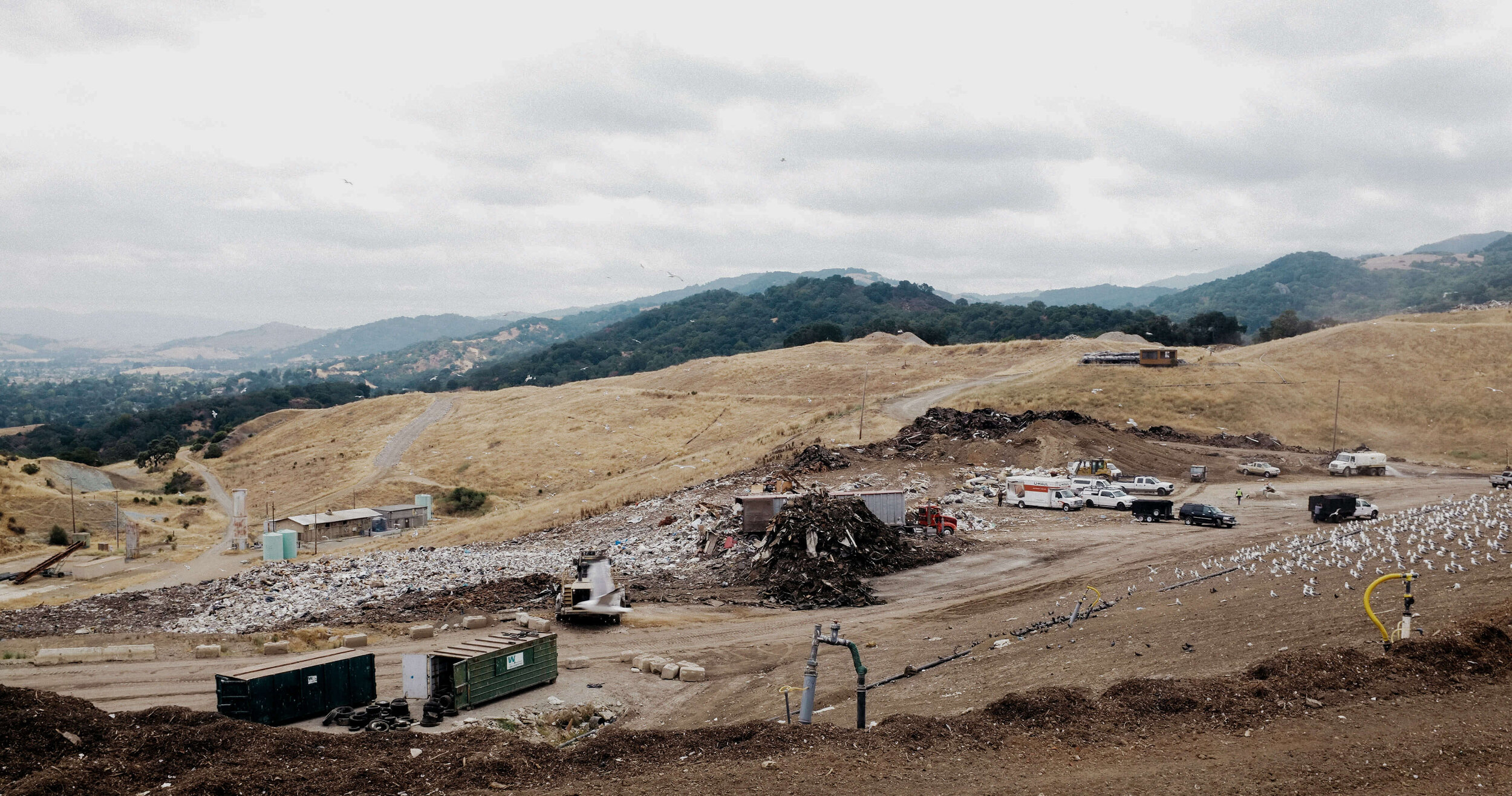The landfill
I decided that going to a landfill would be quite interesting, especially for the sake of better understanding how waste is handled in my local vicinity. So on a Friday at 10 AM, I headed out to meet Neil, the Operations Manager of the Guadalupe Canyon Waste Management facility, for an arranged tour.
Guadalupe Canyon is about a ten-minute drive from my home, that I could potentially call it my backyard. However, it’s cleverly nestled in the hills of the valley that I found myself having to drive an extra mile through a long winding road that curved through the hills. I met a line of about twenty pickup trucks at the top that were waiting to dispose their waste, and I can imagine that it must’ve looked pretty funny to see myself in a little Toyota Camry, feeling a bit out of place as I was waiting to get in. Find the details of my visit below, as well as some zero waste tips to get you started on reducing your waste.
What happens at the local landfill
At the office of Guadalupe Canyon, I was greeted by Neil and his trainee Alex, and we hopped into their truck to start the tour. Alex started off the tour by stating that Guadalupe Canyon receives 1400 tons of waste each day (or the weight of 1400 fully grown polar bears, to put it in perspective) -- 900 from municipal solid waste, 200 from green waste, and the rest from roofing, dirt, etc.
Of its 311 acres, Guadalupe Canyon dedicates 111 acres for landfills. We drove through a decent plot of land filled with trash, which was Guadalupe Canyon’s current active landfill, the location where we throw our most recent trash into and then run over with a compactor.
Neil explained that Waste Management treats its landfills by first lining proposed landfill areas with an engineered cloth material. Once lined, they are then filled with our trash and compacted. Over time, these landfills will settle five feet in depth and will also release certain waste products: methane and percolated water are the main two, which must be caught with gas wells and leachate tanks. Inactive landfills are once active landfills that are finally covered in dirt and concrete and then left alone. At a point during the tour, we drove on top of a massive hill that was an inactive landfill; impressive, yet slightly disturbing that we were driving on a solid mountain of trash.
We manage our waste quite well by stacking it into a mountain and covering it, rather than simply tossing it on the streets, but there’s still some concern that the hills of my neighborhood might someday be called 'Trash Mountain'. Even Neil mentioned his disbelief about how some consumers would bring in an unreasonable amount of waste, and how fast it could accumulate.
I imagine that no one would want wild deer and foxes to forage around our potentially toxic trash, or for Guadalupe Canyon to become a threat to the people or animals that are living so close by it in the future. Seeing the panoramic view from the landfill, I couldn’t help but be in awe of the nature that was surrounding me, but it was a pity to see all of our plastic, food, and waste being dumped right there, and to also see an army of seagulls just waiting for it.
3 tips to start reducing your waste
After seeing the conditions and taking note of all the operations at my local landfill, I began to realize that there is some room for improvement from our side as consumers. There’s a lot of work to be done from all different angles (businesses, governments, etc.), but below are three tips to start reducing your waste.
Know that anything in your trash is considered waste
WM facilities do not have the time to pick up a recyclable item if it’s in their solid waste stream - one of the easiest things that we can do as consumers is to recycle, in order to divert what we can from the landfill
Find more information on what is recyclable in your local area, because every area is different, and the industry needs it
Try composting, or find a facility or farmers' market to do so
Landfills are in no condition for letting things biodegrade - even food such as carrots take years to rot and can be found black due to lack of oxygen and UV light for proper composting
Consider trying composting at home, or find a local drop off location
Be aware of future purchases
Consider taking a local landfill tour to make things more personal, and educate yourself about your local waste management system
Cut down on impulse purchases and consciously try to avoid products that will add up in the waste bin





